
With Tale of Tales and The Huntsman: Winter’s War both opening this weekend, we have a sudden double feature of fairy tale movies on our hands. That makes it an excellent time to revisit the only fairy tale film nominated for the Oscar Best Production Design, The Wonderful World of the Brothers Grimm. (That seems impossible, I know, but it's true.)
The Wonderful World of the Brothers Grimm was the first narrative feature to be shot in the original 3-panel Cinerama process. The second, and last, was How the West Was Won, which I showcased two weeks ago. While the epic Western, or at least some its directors, tried to smooth over the unwieldy 3-camera process with landscapes and the occasional single-camera 70-mm shot, directors Henry Levin and George Pal really ran with Cinerama for their fairy tale epic. The results were a bit bonkers...
The film uses Wilhelm and Jacob Grimm, played by Laurence Harvey and Karlheinz Böhm, as a framing device for three extended fairy tale sequences. The first, based on “The Dancing Princess,” is entirely live action. The second, “The Cobbler and the Elves,” is mostly performed by Pal's stop motion Puppetoons. The third, however, is an incredibly strange blend of live actors and animation that yields some really creative production design.
“The Singing Bone” is set up by Wilhelm Grimm’s visit to the house of an old woman (Martita Hunt), an accused witch and storyteller beloved by the local children. She lives in a little house with a thatched roof, as you might expect.
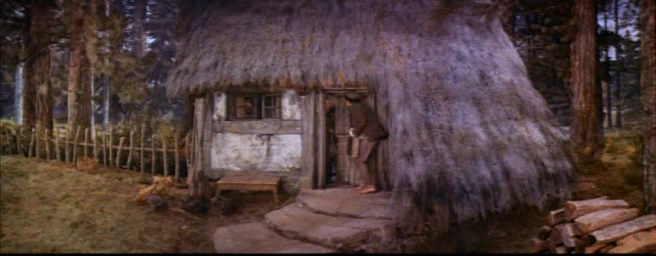
Of course, the widescreen demands of Cinerama mean that it looks a lot bigger inside.
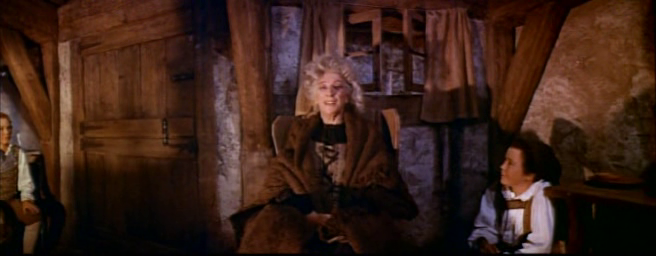
So many of the interiors in the film are gigantic spaces, stuffed like Dutch Renaissance still life paintings. Here’s just a taste:
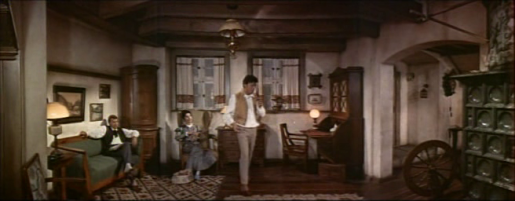
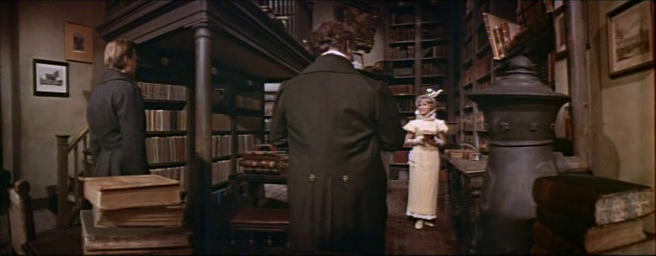
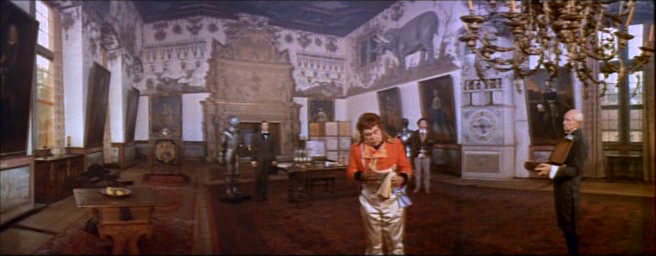
And now, back to “The Singing Bone.” The storyteller begins with Sir Ludwig (Terry-Thomas) and his squire, Hans (Buddy Hackett), on their way to kill a menacing dragon. The dragon lives deep in a cave, one with rough, scaly walls that mimic the hide of the terrible beast.
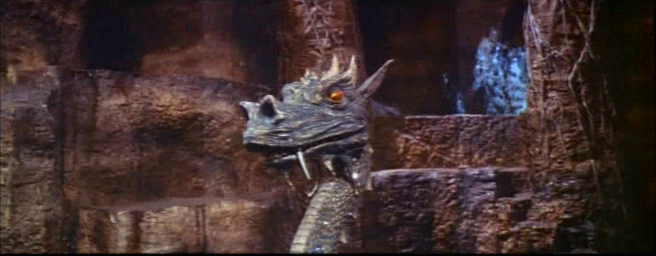
The ensuing comic battle is full of rough combinations of miniature stop motion wizardry and human-sized sets. Here’s Hans, having just bent his sword on a piece of set built to look like the side of the dragon.
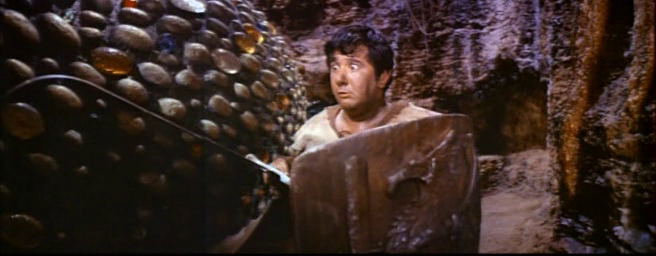
Just moments later, he finds himself cowering under another piece of partial-dragon furniture, this time in the shape of the belly.
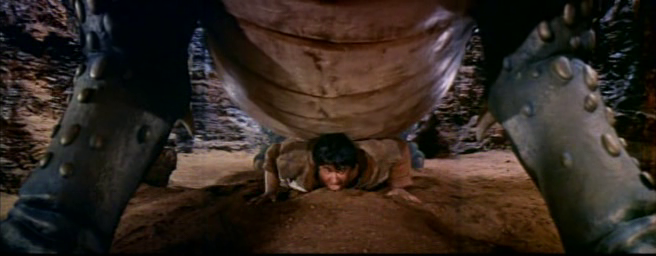
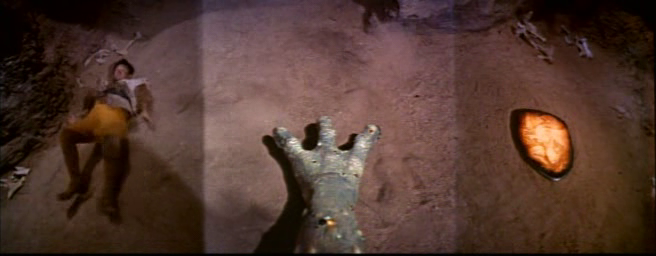
Some shots work better than others. Among the best is a visual joke built from the combination of hand-drawn animation and production design. Sir Ludwig dodges the dragon and hides behind the following large, oddly shaped rock.
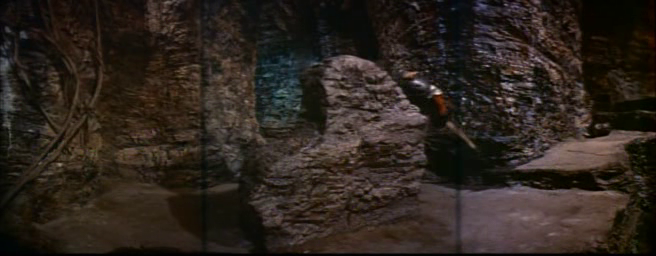
But it’s no obstacle to the dragon, who dismantles it with his fire breath.
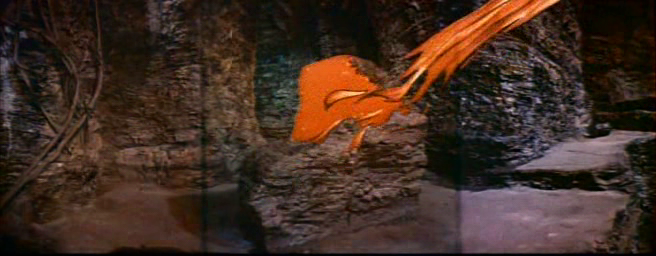
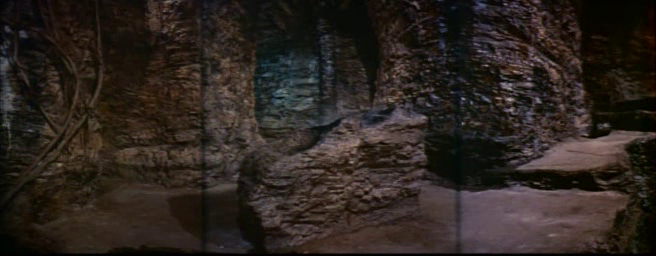
Admittedly, the sequence can seem very silly to 21st century eyes, spoiled by contemporary technology. The stop motion dragon is a whole lot of fun on its own, but the interplay between live action and animation doesn’t always quite work. The 3-camera Cinerama method was not long for the world, anyway. But the experimentation in The Wonderful World of the Brothers Grimm, with its jam-packed period interiors and its fantastical fairy tale sequences, is a charming landmark in Hollywood production design history.